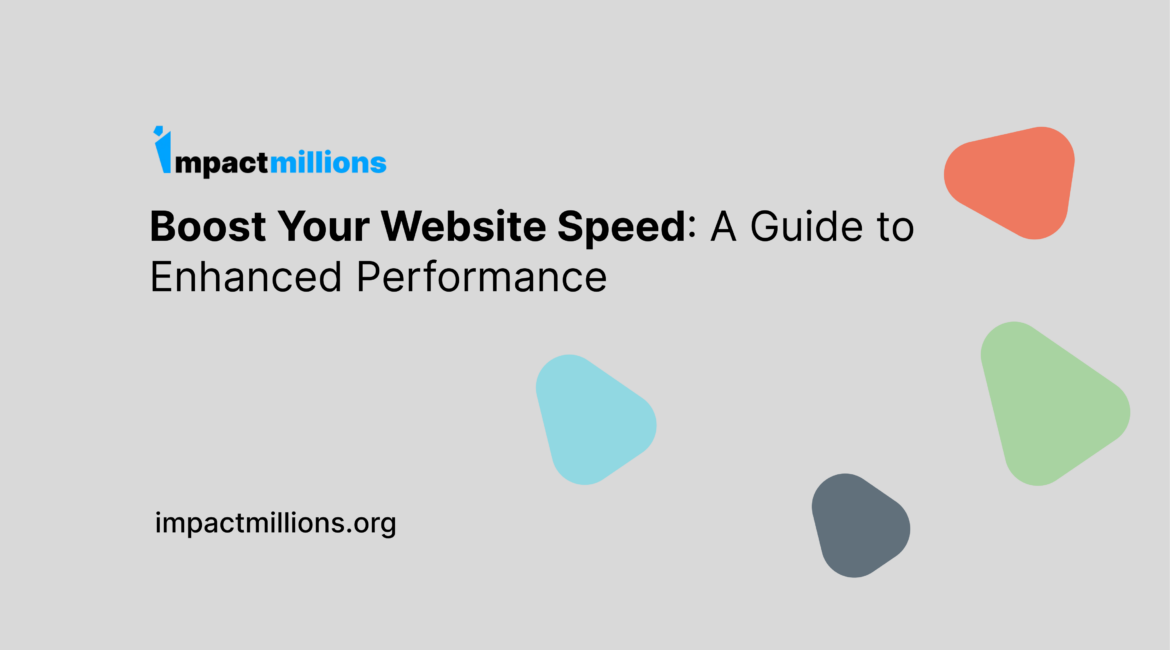Table of Contents
In today’s digital age, speed is a crucial factor when it comes to website performance. Slow-loading websites not only frustrate users but also have a negative impact on search engine rankings. To maximize user experience and improve your website’s visibility, it is essential to optimize its speed. In this article, we will explore effective strategies to increase your website speed while keeping it SEO-friendly.
In today’s digital age, speed is a crucial factor when it comes to website performance. Slow-loading websites not only frustrate users but also have a negative impact on search engine rankings. To maximize user experience and improve your website’s visibility, it is essential to optimize its speed. In this article, we will explore effective strategies to increase your website speed while keeping it SEO-friendly.
Optimize Image Sizes
Images often constitute a significant portion of a webpage’s file size. By optimizing image sizes without compromising quality, you can significantly reduce loading times. Use image compression tools to compress images and choose the appropriate file format (JPEG for photographs, PNG for graphics with transparency). Additionally, consider lazy loading techniques to load images only when they come into the user’s view, further enhancing speed.
Leverage Browser Caching
Enabling browser caching allows you to store static files on visitors’ browsers, enabling quicker page loading for return visitors. By specifying appropriate caching headers, such as “Expires” and “Cache-Control,” you can determine how long browsers should cache specific resources. Utilizing Content Delivery Networks (CDNs) can further enhance caching by delivering content from the nearest server location, reducing latency.
Minify CSS, JavaScript, and HTML
Minification involves removing unnecessary characters (whitespace, comments, etc.) from CSS, JavaScript, and HTML files. Smaller file sizes lead to faster downloads and improved website speed. Several online tools and plugins are available to automate this process, ensuring optimal performance while maintaining code readability.
Enable GZIP Compression
GZIP compression reduces file sizes by compressing web resources before transmitting them to the user’s browser. By enabling GZIP compression on your web server, you can significantly reduce the size of HTML, CSS, JavaScript, and other text-based files. This results in faster data transfer and reduced bandwidth usage, ultimately enhancing website speed.
Minimize Redirects
Redirects create additional HTTP requests and add unnecessary latency to page loading. Minimizing the number of redirects helps reduce the time it takes for the browser to reach the desired content. Review your website’s redirects and update them to direct users to the correct pages with minimal detours.
Utilize a Content Delivery Network (CDN)
CDNs distribute your website’s content across multiple servers worldwide, reducing the physical distance between users and your website’s files. By leveraging a CDN, you can deliver content to visitors from the server closest to their location, minimizing latency and improving website speed. Choose a reliable CDN provider with a robust network infrastructure for optimal results.
Optimize Server Response Time
The time it takes for your server to respond to a user’s request significantly impacts website speed. Optimize server response time by employing caching mechanisms, using a faster web server software, optimizing database queries, and ensuring sufficient server resources. Regular monitoring and fine-tuning are crucial to maintaining an optimal server response time.
Prioritize Above-the-Fold Content
Load time perception is greatly influenced by the visible content above the fold. Prioritize loading critical above-the-fold content first to provide users with a faster initial rendering experience. This can be achieved by optimizing the order of resource loading, asynchronously loading non-critical elements, and utilizing techniques like CSS sprites.
Conclusion
Enhancing your website’s speed is not only crucial for providing an exceptional user experience but also for SEO optimization. By implementing the strategies outlined in this guide, such as image optimization, browser caching, minification, GZIP compression, and CDN utilization, you can significantly boost your website’s speed. Regularly monitor and fine-tune your website’s performance to ensure optimal speed and stay ahead of the competition in the digital landscape.
